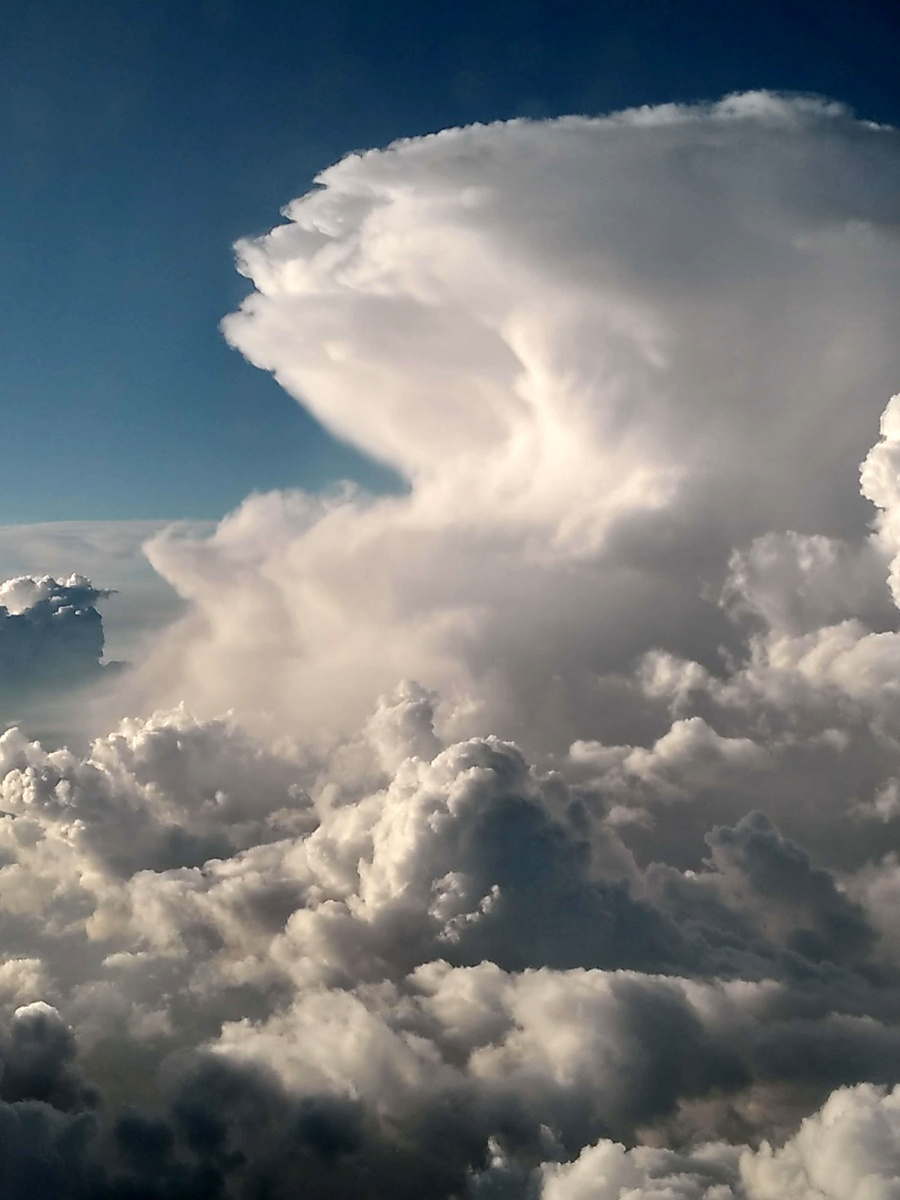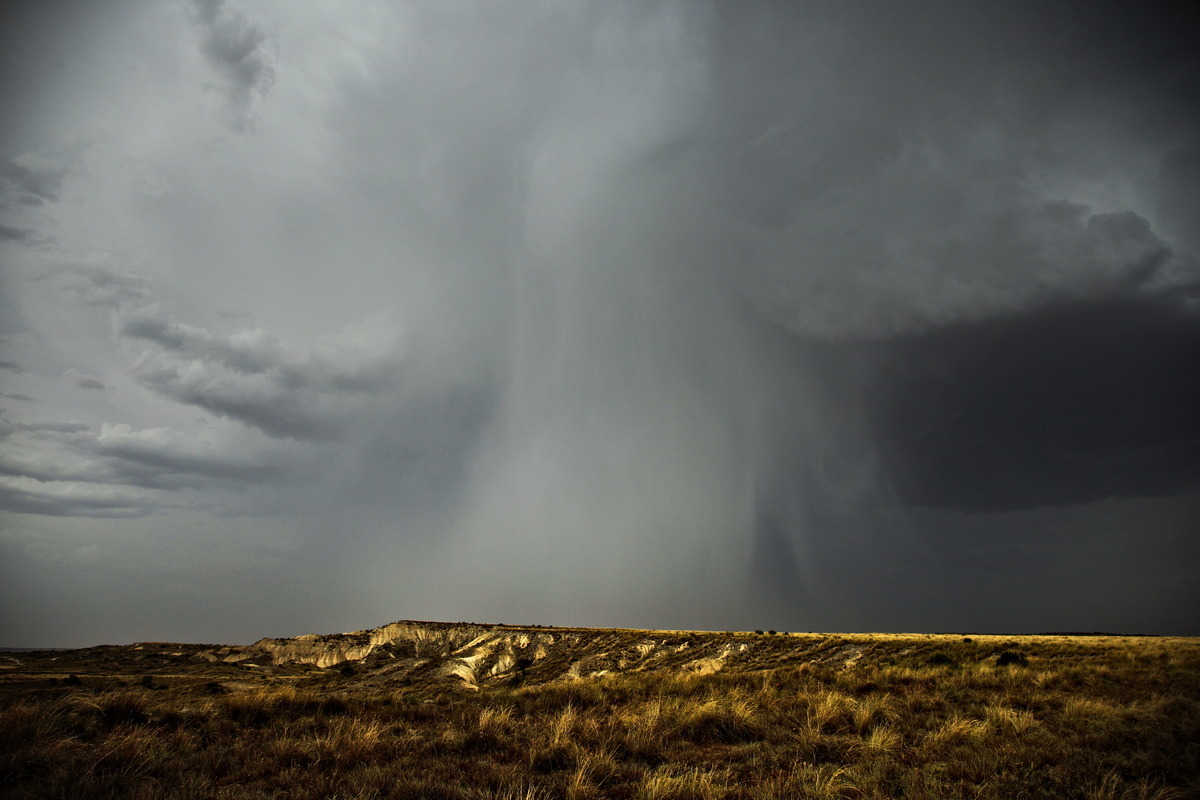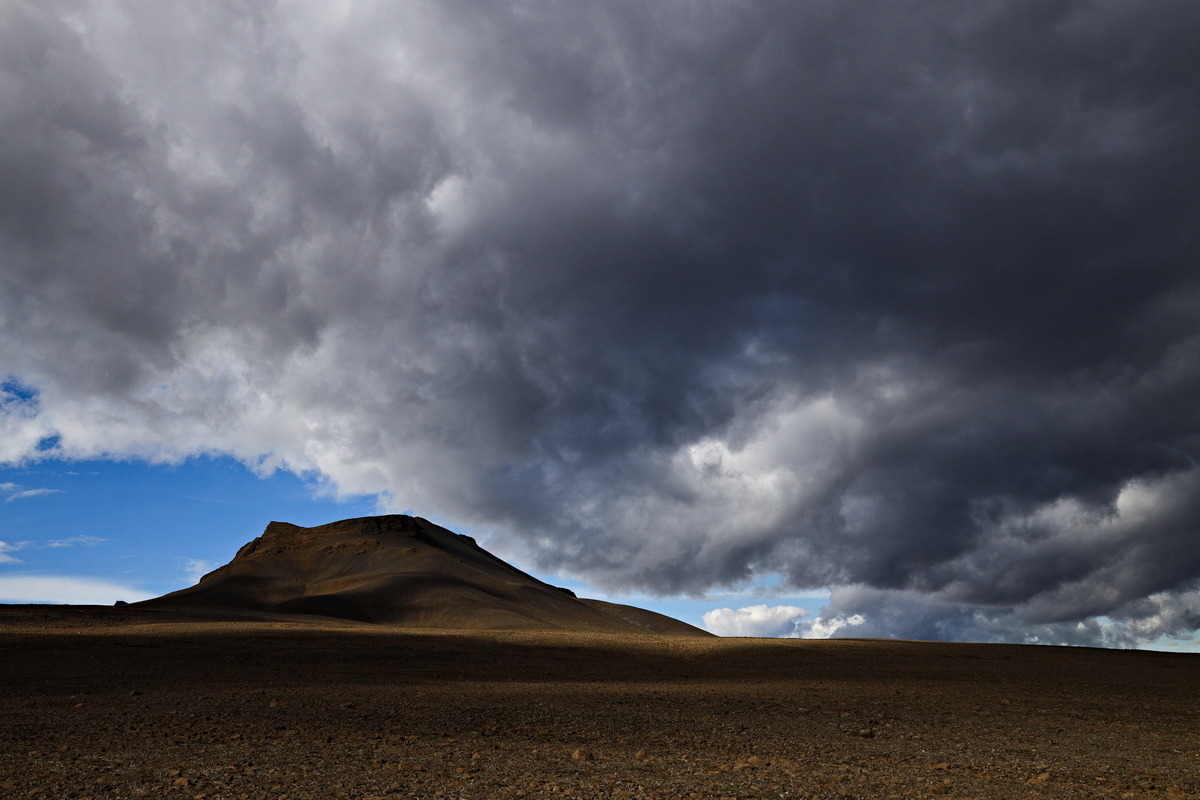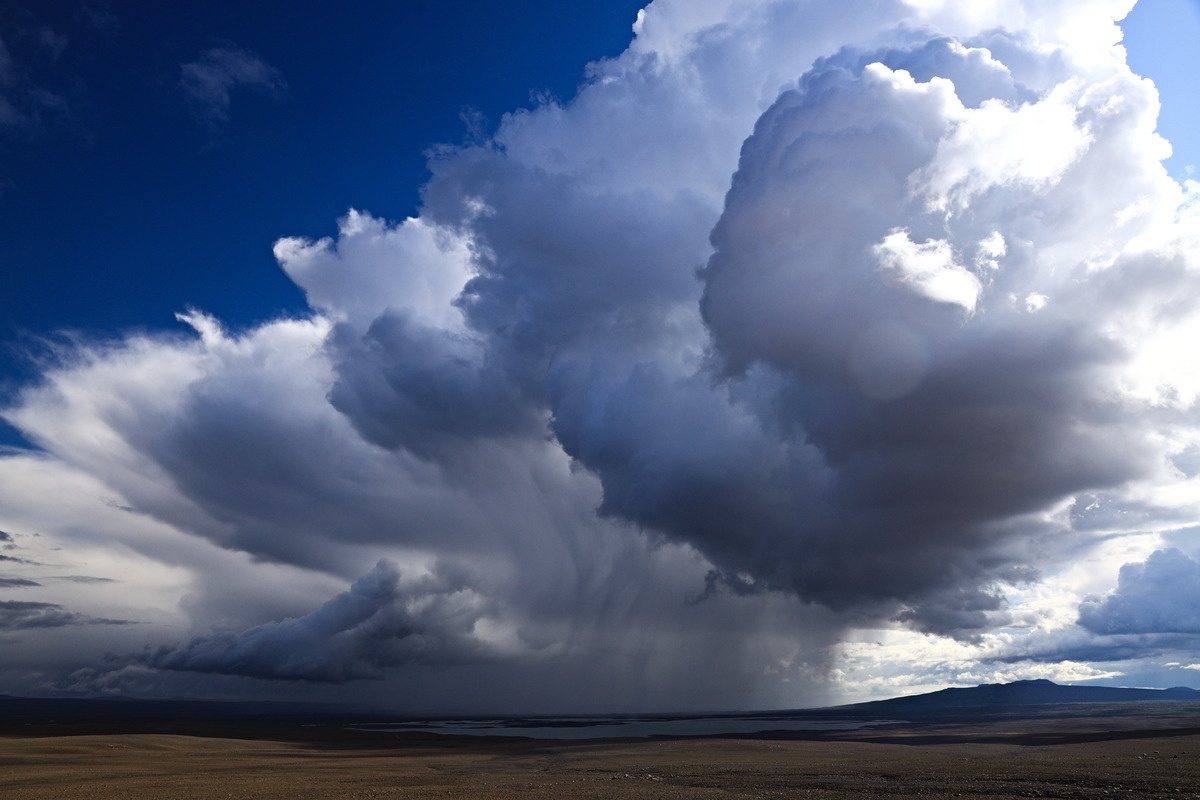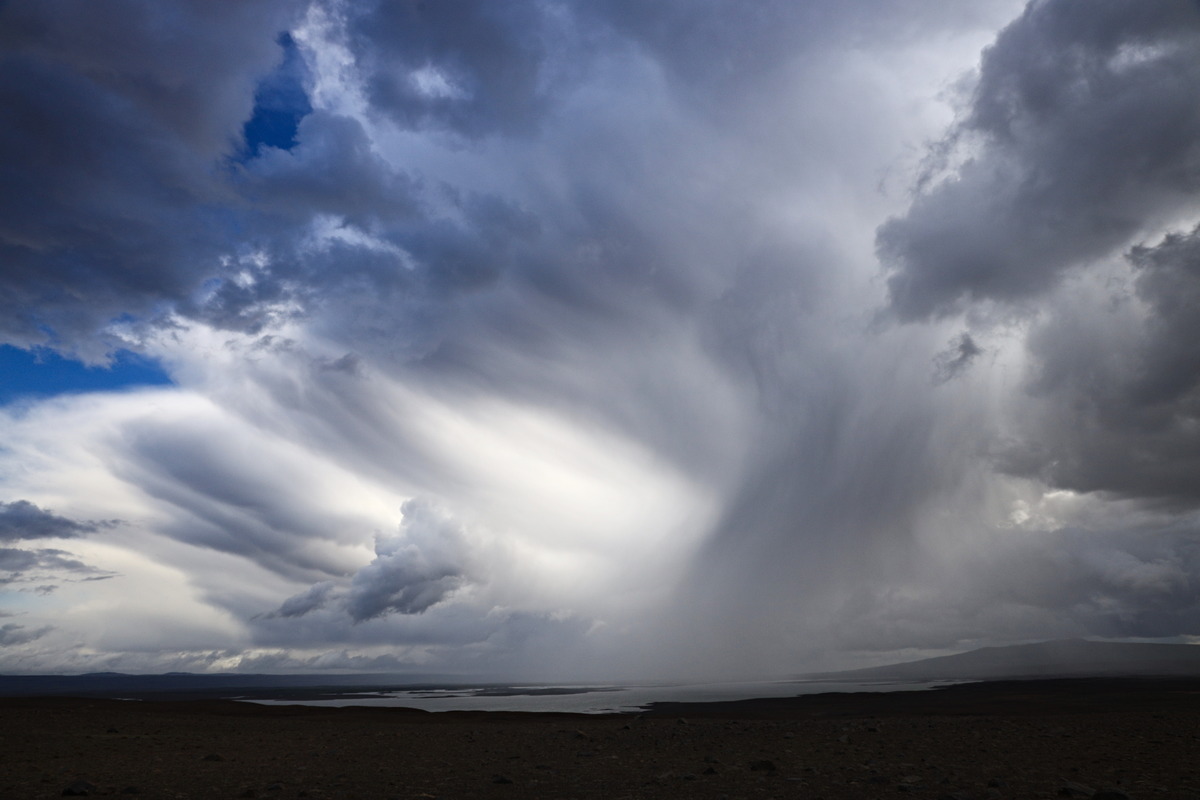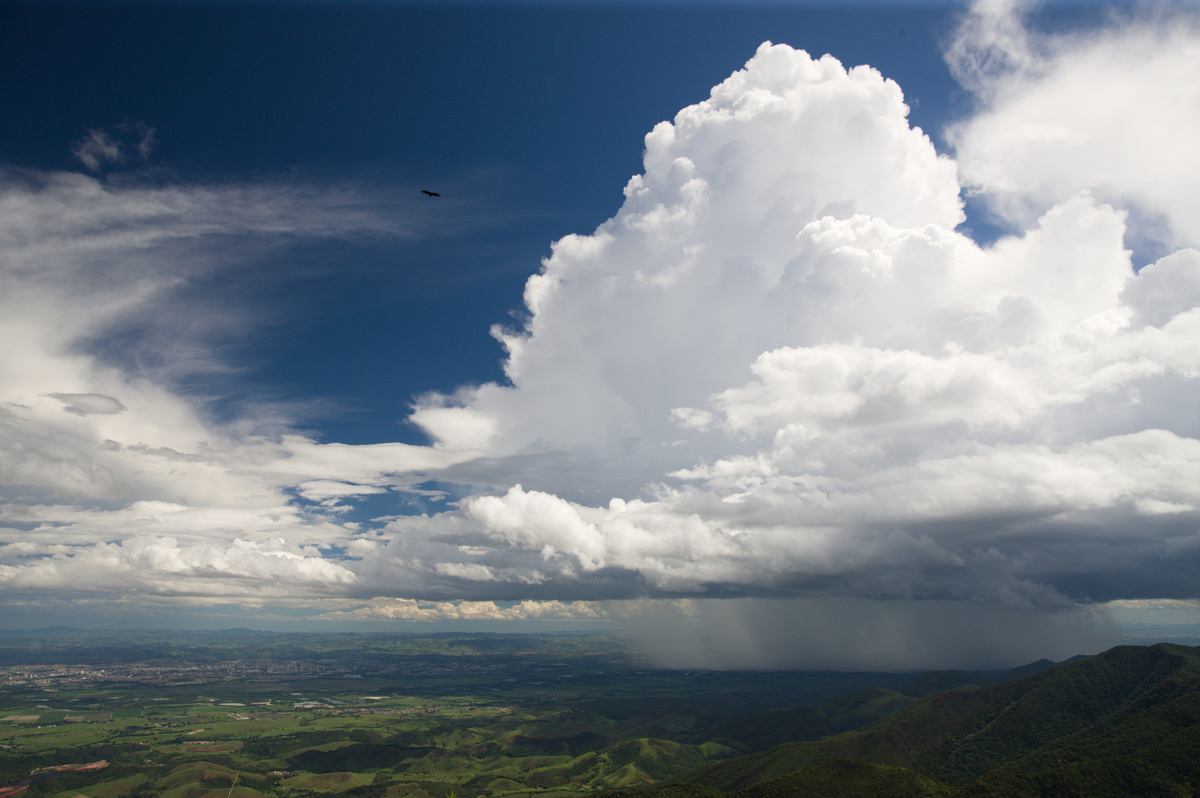Atmosphere
Composed mostly of nitrogen (78%) and oxygen (21%), along with and trace amounts of other gases such as argon, carbon dioxide, neon, helium, and methane, the Atmosphere is formed by several layers of gases (troposphere, stratosphere, mesosphere, thermosphere, and exosphere, from the surface outward) that surround the Earth, and is held in place by gravity.
The atmosphere plays a crucial role in supporting life on Earth by providing the necessary gases for respiration, regulating the system’s temperature through the greenhouse effect, and protecting the planet from harmful solar radiation. Life, however, shapes the atmosphere along the Eras and its composition follows the changes in Earth’s biological activities.
Most observable atmospheric events are related to the water cycle (e.g. cloud, thunder and rainbow formations) – hydrosphere – and to the scattering of solar radiation – the reason why the sky is blue in harsh light and colourful when the sun is low, relatively closer to the horizon. The colours produced by the scattering of light is dependent on the size of the particles in the atmosphere.








